Sunday Pastries With the Dead 24
The 1766-era St. Paul's Chapel Churchyard Cemetery in New York, NY.
Today, thanks to a recent NYC trip, I’m detailing my exploration of St. Paul’s Chapel in Lower Manhattan. It’s the oldest surviving church in the borough, built in 1766, and is an outreach chapel of Trinity Church, located just a few blocks south (which I covered in this October 2022 SPWTD post).
This little chapel has survived a whole lot of history. It weathered the Great New York City Fire of 1776 unscathed, George Washington went to services here on his inauguration day, and—most recently—it was a steadfast spot of respite for emergency workers and volunteers on September 11, 2001.
The church sits directly next to the World Trade Center site, and when the towers fell it miraculously sustained no physical damage thanks to the tree cover above its building and cemetery. Though the churchyard was sheathed in a thick layer of debris; eventually, a restoration grant allowed for two inches of ash-laden topsoil to be cleared and replaced. For many months, the fence surrounding the property was plastered with memorials to those killed in the terrorist attacks.
The cemetery—which now resides in the shadow of both the 9/11 Memorial and the spine-like Oculus Center—has about 1,200 interred, 800 headstones, and 30 burial vaults beneath both the yard and church. Interments in lower Manhattan were prohibited by the mid-1800s, after which burials here (with the exception of a few family plots) ceased.
Today, fences line the paths through the cemetery, so visitors can’t get up close and personal with the headstones. This was a particular torture for me—often, much to the dismay of the patrolling security guards, I found myself leaning precariously over them to attempt semi-close-up photos.
There are several notable people buried here—publisher John Holt, Founding Father William Houstoun, and British actor George Frederick Cooke, to name a few. Revolutionary War General Richard Montgomery is buried beneath the east porch of the church—a plaque on the wall (pictured above left) serves as his headstone. Stephen Rochfontaine is buried in the yard beneath a monument (above right) topped by a lovely simple urn (which symbolizes the earthly body being reduced to its barest elements as the soul ascends); he was a French-born American military engineer who served under General Washington and later commanded the Corps School of Artillerists and Engineers.
Of the monuments I was able to spy from my vantage point on the walkways, I found a few interesting early carvings of urns from 1802 and 1795, as well as what appears to be a lighthouse on a very weathered ledger stone monument. This was my first time seeing the symbol—it represents salvation and the guiding light of heaven/the Holy Spirit.
I was delighted to find plentiful examples of my favorite cemetery symbol: the death’s head. Though there were none of my preferred designs, the more primitive skull between wings, there were many of the later versions bearing a more human (eerily cherubic/Queen Elizabeth I-esque) face. The skull stands for the harsh puritanical idea that death is the absolute end, while the “softer” faces allow for the idea that our souls live on forever after ascending to heaven. The above examples are from 1768, 1769 (complete with glorious flower crown and lettering!), 1771, and 1784 (for both a mother and her infant, ugh).
To wrap up, I’m including this battered but not broken headstone that’s stubbornly hanging on (boy, do I identify with it), this extremely weathered death’s head that I choose to believe once bore a skull at the center, and this utterly gorgeous (and wonderfully-preserved) twin angel carving.
Until next Sunday, fellow taphophiles!

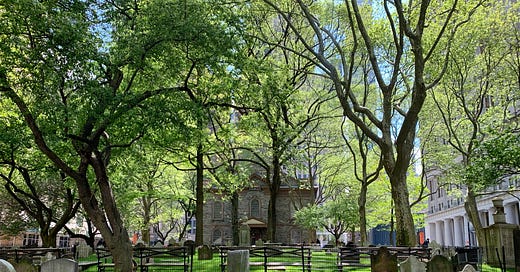




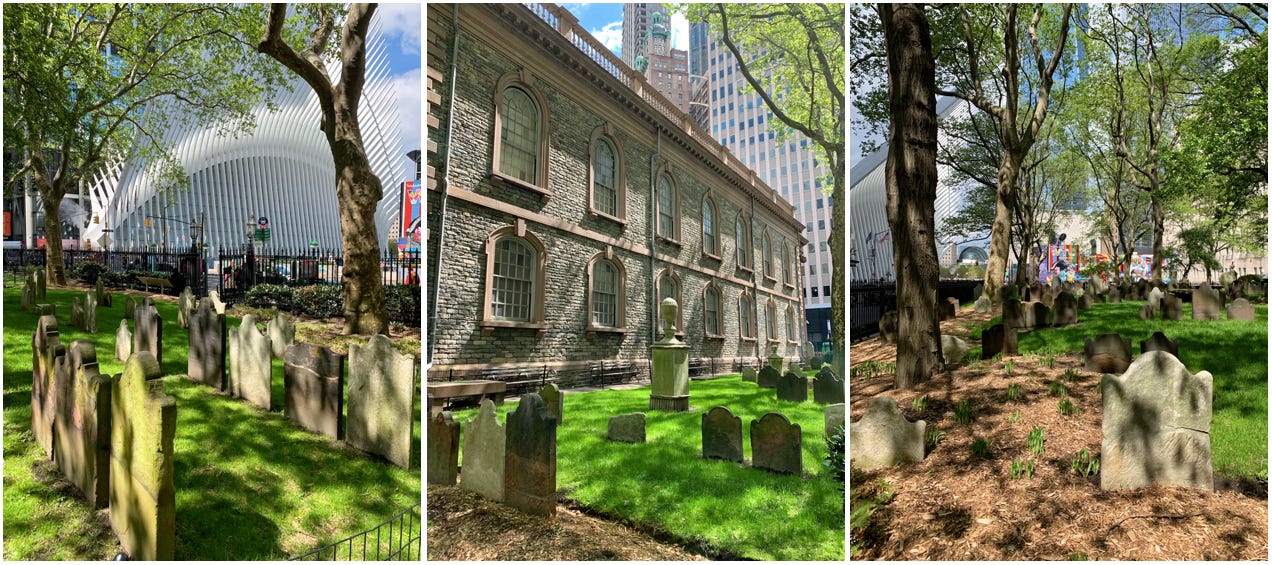

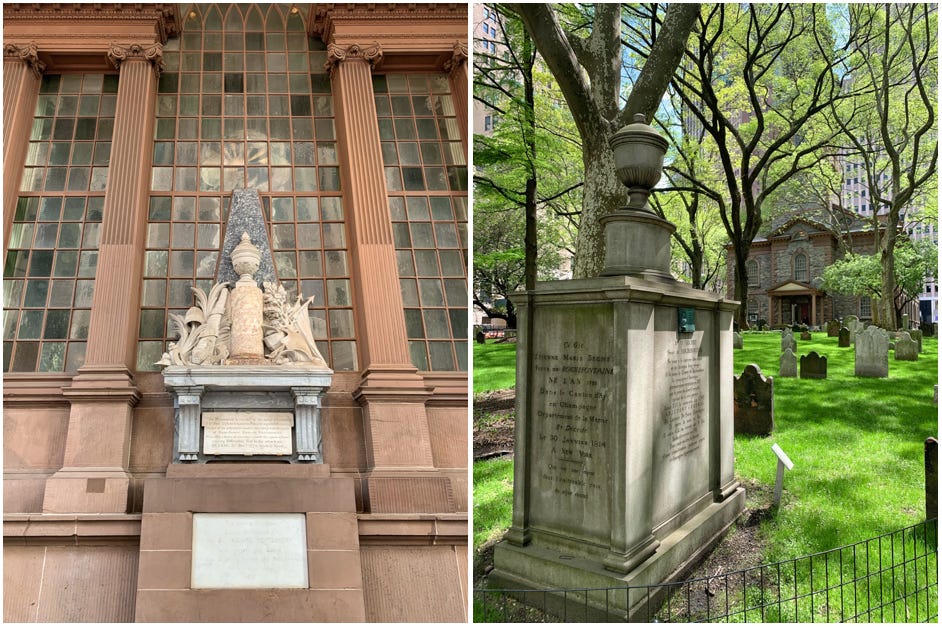
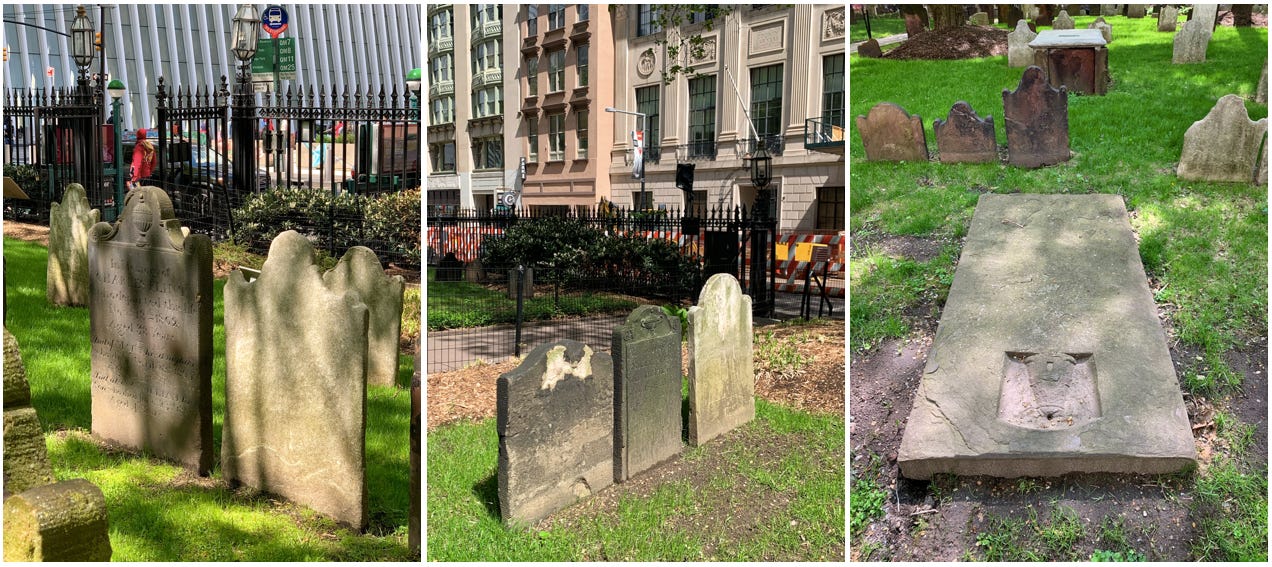

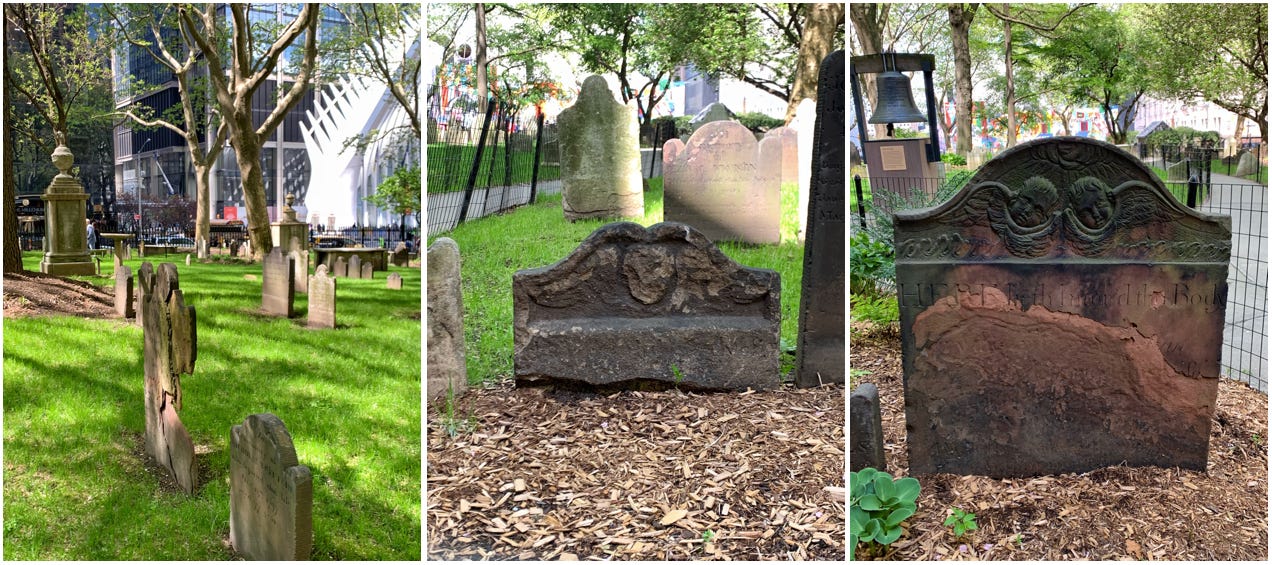
Wonderful pics and post! But I must ask about your pastry... what IS it?
Intriguing! 🥐